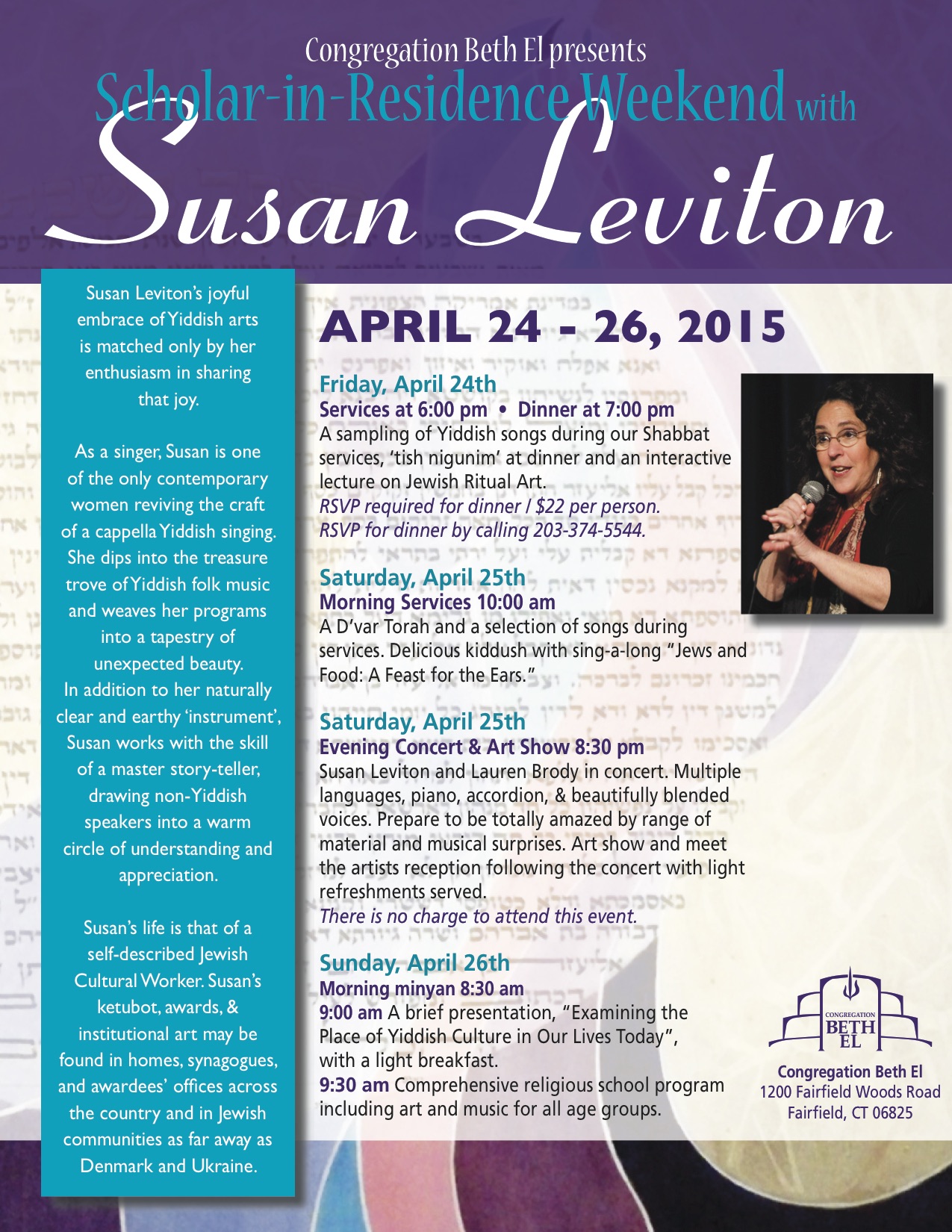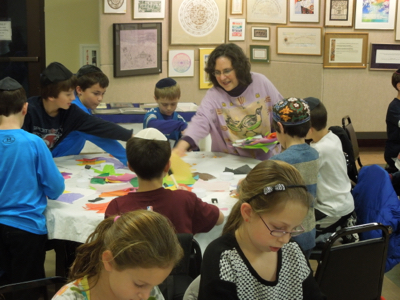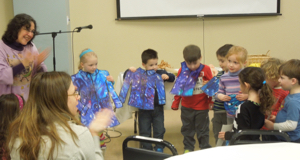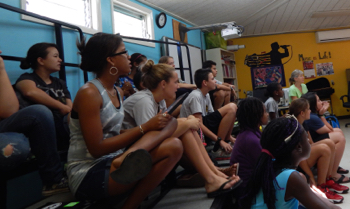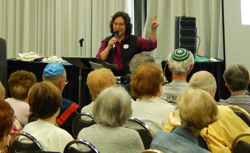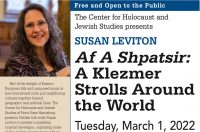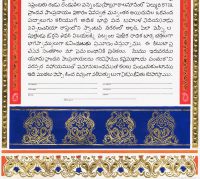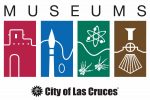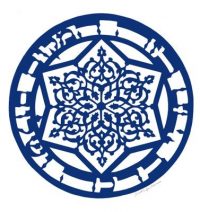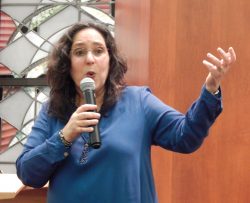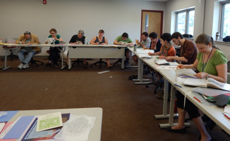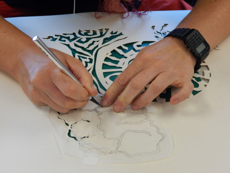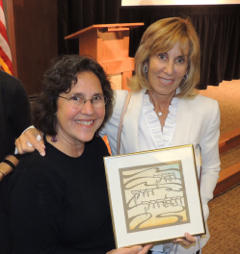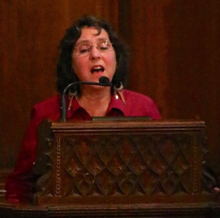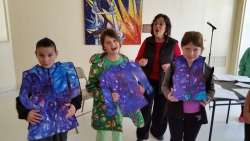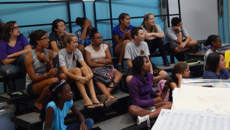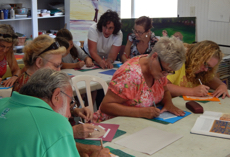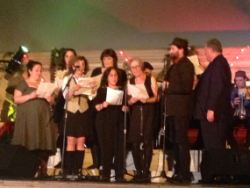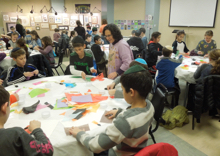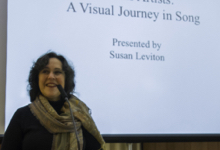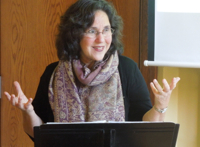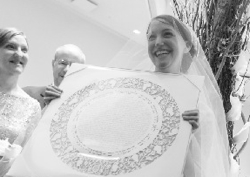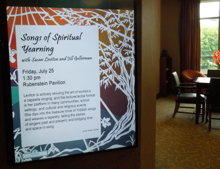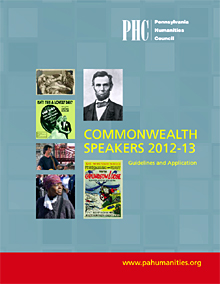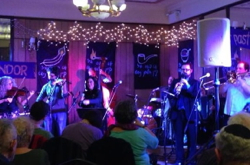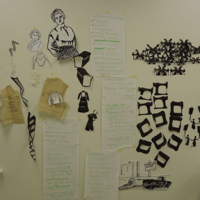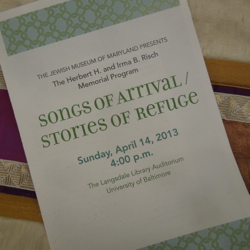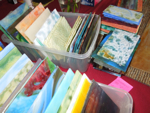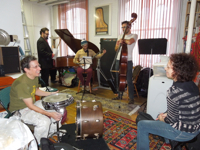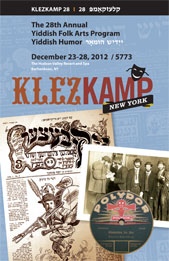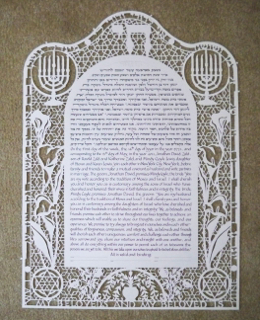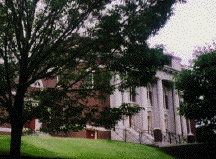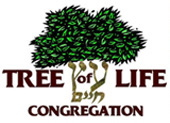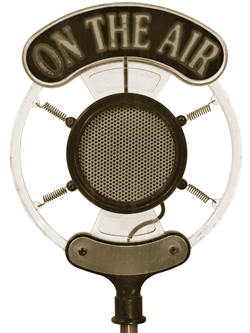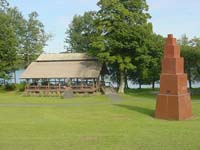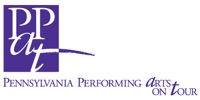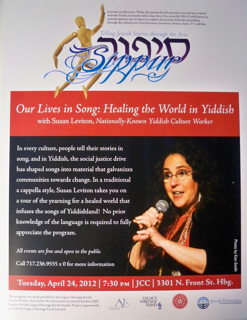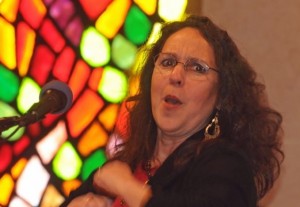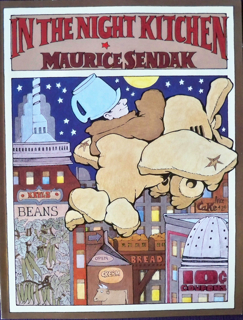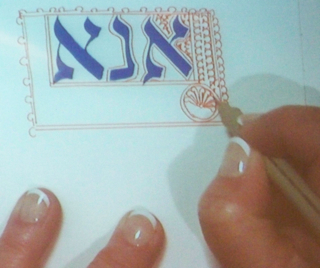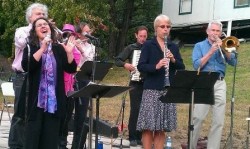WHAT’S A RESIDENCY?
A residency is a period of days that an artist spends within a community teaching, performing, demonstrating, and making art/or and music and engaging people in an artistic endeavor. Programming is crafted to maximize learning opportunities that take into account the makeup of the audience, the amount of time allotted, and agreed-upon goals of the host and the artist.
I frequently build residency work into my performance programming because it allows me to ignite interest with hands-on experience in Yiddish song and Jewish arts along a wide spectrum of ages (youngest children to their oldest elders!) and backgrounds. Every residency is custom designed for a specific community or group. For ideas as to what may be built into a residency, review the website pages under Programming that cover Lecture/Recitals, Art Workshops, Lectures, and Concerts and take a look at the following sample program. Feel free to read testimonials from people who have welcomed me into their schools, communities and synagogues. Please note that everything is flexible, and new programs can be developed to meet the needs and interests of your particular group!
Residencies may last a day or two or a full week or more. I’ll be glad to discuss any ideas with you in order to craft a wonderful trip into Jewish arts for you and your community!
A 4-DAY RESIDENCY MIGHT INCLUDE:
* An art show of calligraphic paintings and papercuts.
* A gallery talk with calligraphic demonstration and hands-on practice in forming basic letters.
* An evening concert on the theme “Lives in Song!” with accompaniment of one instrument to a full band!
* A lecture/recital on “Rage Against the Sewing Machine—A History of Struggle and Hope,” with a PowerPoint presentation of song translations and archival photographs.
* A slide lecture on the history of worldwide and Jewish papercutting.
* Three sessions of hands-on papercutting culminating in a participants’ art show.
* A family concert focusing on children’s interactive participation with props and movement.
Please note that all of my residencies are respectful of Sabbath observance, so I carefully build my programs to make use of computer projections, hands-on art workshops, and musical accompaniment before and after Shabbat itself and not during Shabbat. That leaves plenty of opportunity for incorporating programming into Shabbat. For example, I frequently introduce niggunim during Friday night services and offer a lecture or lecture/recital in lieu of a sermon. Following Shabbat morning services, we could sing through a kiddush lunch together and I could offer a song repertoire workshop or an interactive discussion on contemporary Judaica with artifacts in the afternoon.
The make up of your group and the time allotted will help shape a perfectly suited and memorable residency. I encourage you to contact me so we can begin a discussion!
As I move further afield to plant seeds of Yiddish culture, I find myself building bridges into communities where Yiddish is a brand new concept. So it was in February, 2015, when I crafted a multi-day residency on the island of St. Croix. Here’s a glimpse of the high school music class I taught at the St. Croix Country Day School:
__________________________
SO F’RINSTANCE…
A week-long residency at the Block and Hexter Vacation Center in August, 2012 featured the following:
- Day one – two-part lecture/recital “Rage Against the Sewing Machine.”
- Day two (Shabbat) – afternoon recital “Yiddish Songs of Spiritual Yearning” and a full concert after dark.
- Day three – two part lecture on the history of Jewish papercut art and contemporary expressions.
- Day four – two part lecture/recital “Yearning for Home in Yiddish Song.”
- Day five – two part lecture examining contemporary Judaica and ritual art and how we arrived at this juncture.
- Day six – Two part lecture on the art of the Ketubah and implications of changing demographics in the Jewish world on artistic and text expansions. Actual works in progress were examined along with dozens of slides of historic and contemporary works.
________________________
OR… A TOTALLY NEW WAY TO INVOLVE YOUR ENTIRE COMMUNITY:
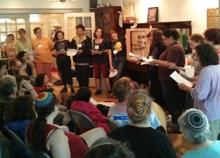 If ordinary (albeit extraordinary) lectures, lecture/recitals, and demonstrations are too tame for you, Susan’s developed a program which will engage everyone from the youngest to the eldest in creative visual arts, traditional Jewish folk arts expression, Yiddish singing and live music, guerilla theater, children’s art, shadow puppetry AND study of Jewish values through poetry and history! Are you intrigued yet? We’ll identify a topic in advance, and then we’ll study archival sources and ‘storyboard’ to draw together singing, perhaps live instrumental music, spoken word, collage, shadow puppetry, and painting in creating a CRANKY, a “primitive, miniature theater in a box.” The residency will culminate in the presentation of a low-tech, high-energy theater experience unscrolled for the assembled masses!
If ordinary (albeit extraordinary) lectures, lecture/recitals, and demonstrations are too tame for you, Susan’s developed a program which will engage everyone from the youngest to the eldest in creative visual arts, traditional Jewish folk arts expression, Yiddish singing and live music, guerilla theater, children’s art, shadow puppetry AND study of Jewish values through poetry and history! Are you intrigued yet? We’ll identify a topic in advance, and then we’ll study archival sources and ‘storyboard’ to draw together singing, perhaps live instrumental music, spoken word, collage, shadow puppetry, and painting in creating a CRANKY, a “primitive, miniature theater in a box.” The residency will culminate in the presentation of a low-tech, high-energy theater experience unscrolled for the assembled masses!
This program requires at least four days and allows for every member of a group or community to become part of creating a marvelous work of theater and art. Inspiration for this type of community project comes from master puppeteer, director, circus artist and Yiddish performance artist Jenny Romaine with whom Susan first explored the art of the cranky in a Workmen’s Circle summer program that paired young teenagers and nonagenarians in a theater presentation based on a Yiddish ballad from World War I.
REVIEW OF A CRANKY WORKSHOP FROM THE 2013 NATIONAL HAVURAH SUMMER INSTITUTE:
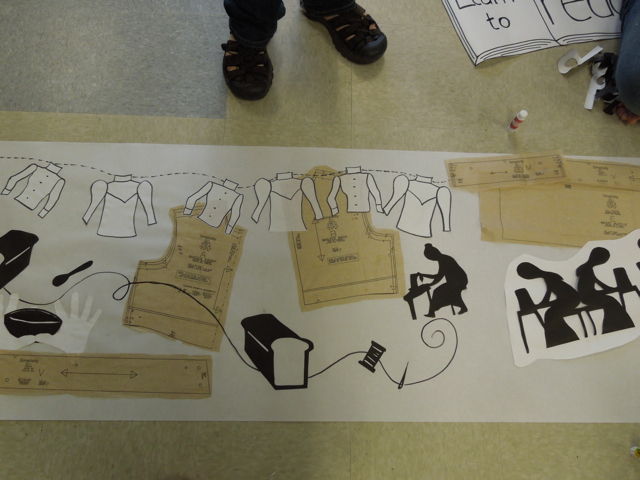
“The class concept called to me as a granddaughter of Yiddish theater people and singers, an educator interested in participatory processes, a musician looking to spend as much of my time at Institute engaged in creative work, and as an organizer committed to working people’s struggles past and present. I came to Institute excited to create this cranky, and curious about how it would all come together.
The first two days of class, I got chills many times. Susan started with the history of the Fire, introductions to key people in the labor movement, and songs of the time. It was astonishing how we all seemed connected to the “fabric” of the class, either as armchair labor scholars, children of garment workers, exceptional singers, Yiddish or German speakers, artists, activists, and storyweavers.
Something I loved about Institute in general was the way teachers truly seemed to be students, and students teachers. This was especially true in Susan’s class. She brought a tremendous depth of knowledge in history, song, and art. Yet even before we began the construction of the cranky, the class environment looked more like everyone adding their bit than Susan depositing her knowledge into us.
This open and accepting atmosphere allowed everyone’s ideas to be heard and captured over the course of several brainstorming exercises. Then came the more challenging part: distilling all the ideas and possible directions into one cohesive project.
This part of the process got a little rough for me. I feared the same freedom that generated participation at the beginning would collapse into chaotic mob rule. Susan responded to the need for more leadership and direction by suggesting the beginning of a storyboard and offering roles and specific tasks for people to do. This intervention created a structure for people to step forward to fill while still providing choices about how they wished to fill it. Even with that necessary dose of clarity, we had to race to bring everything together before the impending performance.
By the last day, however, the class looked less like a sweatshop on fire and more like a collective at work. It was as if we all made the decision to hang with it, and in the end, we built something together that was far greater than what any one of us could have made alone. And while the product was beautiful and moving, I think the process was even more valuable to me personally. It was thrilling to get hands-on experience with this type of collaborative project, to engage with such rich source material, to wrestle with my and other people’s responses to ambiguity, to watch people letting go of their personal ideas in favor of the group’s coalescing vision, and to create something together that didn’t exist four days earlier.” – ABIGAIL ELLMAN
_____________________________________________________
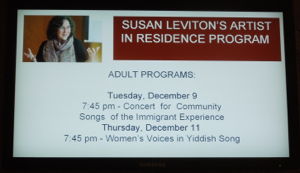 _________________________________________________
_________________________________________________
WHERE HAS SUSAN PRESENTED HER RESIDENCIES?
Among the schools and communities that have welcomed Susan for arts residencies are:
- Shirat HaYam Congegation, Nantucket Island, Massachusetts
- Congregation Agudath Israel, Caldwell, New Jersey
- Earlham College, Richmond, Indiana
- Trinity College, Hartford, Connecticut
- Beth Shalom Congregation, Oak Park, Michigan
- Beth El Congregation, Fairfield, Connecticut
- Klezfest, Yvpatoria, Crimea
- KlezKamp, Kerhonkson, NY, Cherry Hill, NJ, Parksville, NY
- A Bisele KlezKamp, Madison, Wisconsin
- Workmen’s Circle, Detroit, Michigan
- Circle Lodge Summer Learning Program, Hopewell Junction, New York
- Oberlin College Hillel, Oberlin, Ohio
- Mishkan Shalom Congregation, Roxborough, Pennsylvania
WHAT HAVE PEOPLE SAID ABOUT SUSAN LEVITON’S RESIDENCIES?
- Lisa Kassow, Hillel Director at Trinity College, Hartford, Connecticut writes:
“…When I think of all that you accomplish in such a short period of time, all I can think of is ‘Dayeinu.’ [trans: It would have been enough! -sl] Your knowledge of Yiddish music is transmitted brilliantly to an appreciative audience. Dayeinu! Your voice is beautiful, earthy, rich, and easy to sing along with. Dayeinu! The niggunim you chose stay firmly in our heads to sing in the future. Dayeinu! Your explanations of the songs resonate with people of all ages because the themes are so universal. Dayeinu! Your knowledge of the Jewish art form of papercutting, not to mention calligraphy and design, is wonderfully researched and presented. Dayeinu! Your hands-on papercutting workshop plants the seed for continued growth and pleasure through the Jewish arts. Dayeinu!…”
- Myra Sacks writes following a lecture/recital:
“…While your musical artistry has always impressed me, today’s performance was different. I was deeply moved by the vision and scope of your historic research. You took us to a world of song, protest and hope that existed in the beginning of the last century. Your musical selections and your passion in conveying the story of labor conditions gave meaning to the day. You wove poetry, song and democracy into a beautiful tableau of remembrance…”
- Susan Stauffer, MPA, from the Messiah Village Pathways Institute for Lifelong Learning writes:
“Your course session titled “Women’s voices in Yiddish Song” was Outstanding as indicated by verbal and course evaluations from all who attended. Please know how much your involvement in the Pathways Institute is appreciated and that you are always welcome!”
- Elderhostel participants following a week-long residency:
“This is a course you get once in a lifetime!” “My favorite – Susan is a treasure. Don’t lose her. The best in many an Elderhostel.”
- And others:
“When I listen to you I’m reminded of a fairy tale from my childhood about a heroine whose words are accompanied by pearls and roses. Both your music and your message come across in this way.”
“(You) absolutely thrilled the audience with your a cappella performance. We got nothing but rave reviews for your performance.”

